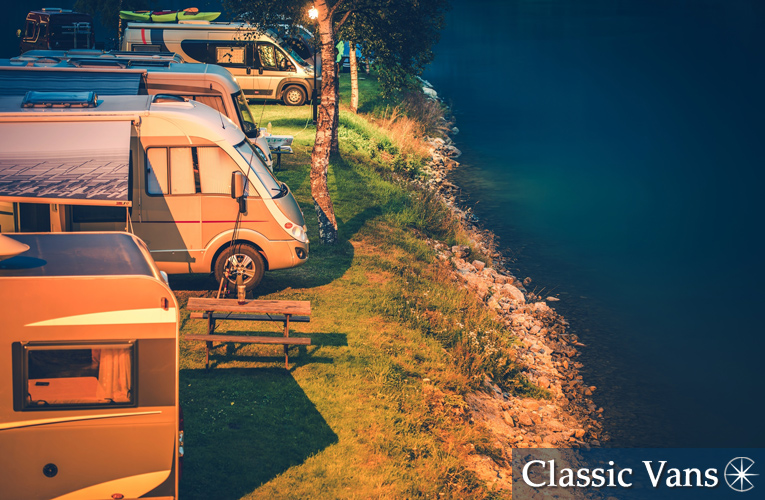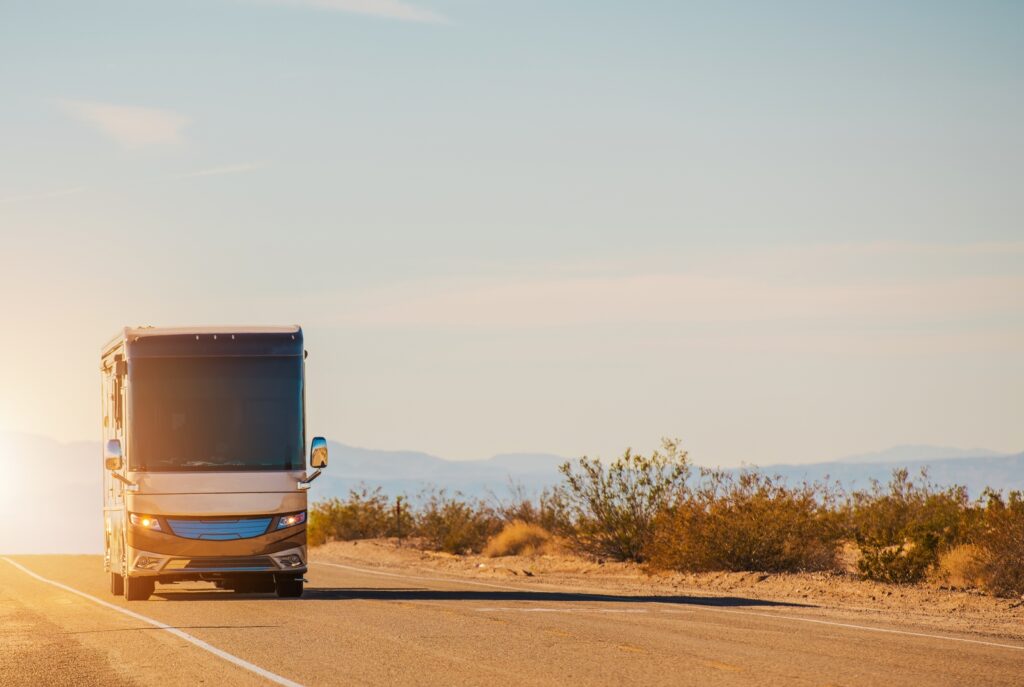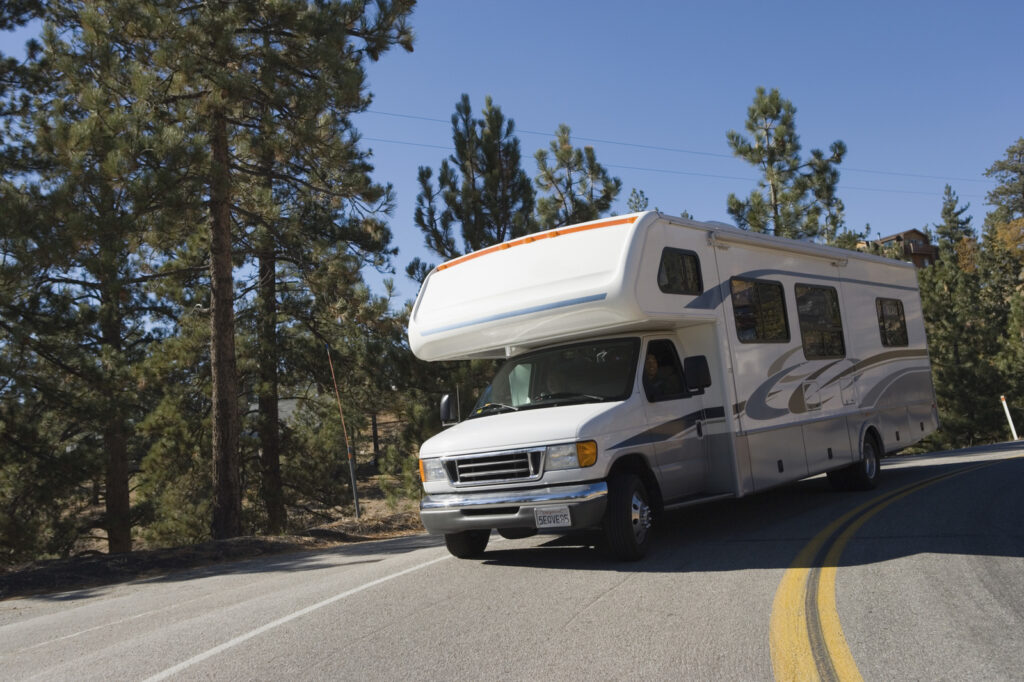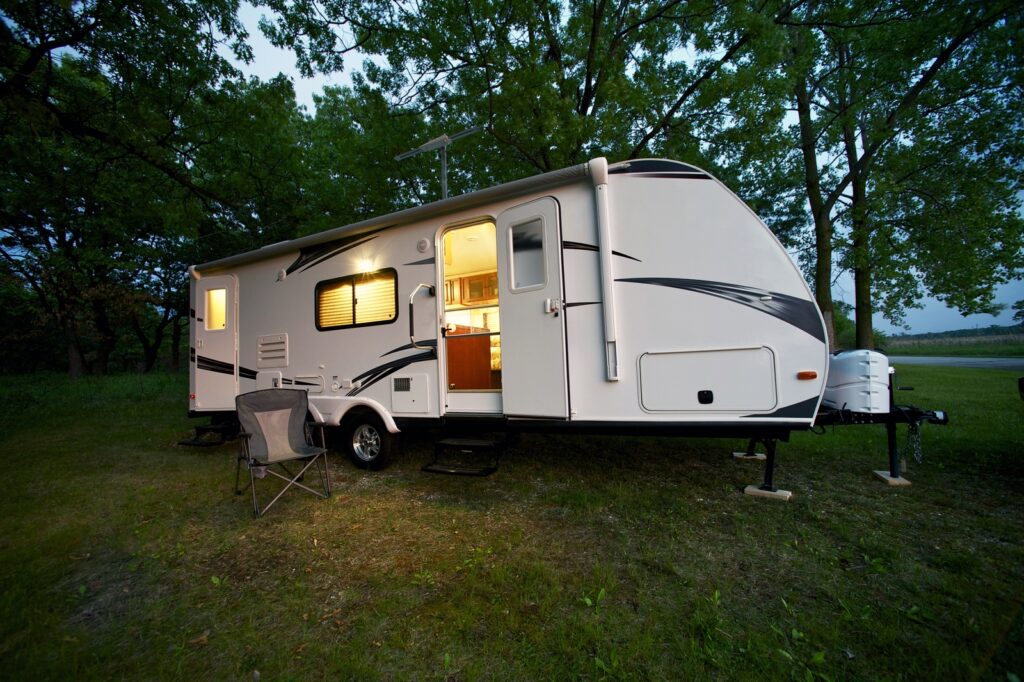
The various types of RVs, motorhomes and campervans, EXPLAINED
We get it. Buying a camping rig or travel vehicle is a BIG decision, with tens of thousands of dollars (or more) on the line adding to the pressure of choosing the right motorhome, RV or travel trailer for your family.
To add to the difficulty, there’s a lot of industry jargon that gets thrown around when discussing various types of motorhomes, travel trailers and campervans that can be confusing. Unless you’ve done your homework or been immersed in the RV world before, you may wonder what the differences are between the various types of campervans and RVs.
Here at Classic Vans, America’s #1 conversion van dealer, our goal is to broadly inform and educate the public when it comes to campervans, motorhomes and RVs. But one thing is certain: there’s no wrong decision when you’re trying to get yourself or your family out into nature to enjoy the beauty of North America and visit all the places you’ve always dreamed about. Of course, you can accidentally buy too much motorhome or too little trailer, but the upside is that your trailer or motorhome can be sold down the road to fund your next RV.
In this article, we’ll dive into the details of each style and type of rig, and highlight some of the biggest pros and cons of each motorhome “class.”
Class A motorcoaches
Let’s start with the biggest and most luxurious category of motorhomes: Class A. Also known as a motorcoach, these bus-like behemoths are some of the oldest and most widely recognized RVs on the road today. The original Class A motorhome was conceived as far back as the 1910s, when people built custom homes-on-wheels by using truck chassis.
A well-remembered example of a Class A RV is the Pierce-Arrow Touring Landau. Custom builders continued to build “housecars” in the 1920s and ‘30s until the outbreak of World War II. It wasn’t until the 1950s that RV production for domestic use began in earnest once again. Around this time, one of the most recognized manufacturers, Winnebago, launched its first Class A motorhome in 1958.
Class A motorhomes are considered the king of motorhomes, with a reputation for being the biggest, most luxurious and expensive rigs on the road. Prices for a new motorcoach can easily hit high 6 and low 7 figures. For those who are interested in a Class A rig but on a budget, the good news is that these rigs have been made for decades and they tend to have durable motors and chassis, so there is a robust used market.
While the features of each motorcoach differ depending on the manufacturer and model year, standard amenities commonly include large kitchens and bathrooms (for an RV), the ability to sleep 4 to 8 people, slideouts to expand interior space and high tow capacity so you can bring along a camp vehicle or enclosed trailer.
Class A’s range in size from as short as 22 feet up to 50 feet long, between 8 and 8.5 feet wide and they can be up to 13 feet tall. This impressive size can have a downside, however. Some National Parks can’t accommodate Class A motorhomes, so you’ll have to bring along another vehicle or get a smaller rig (shorter than 35 feet) if you want to go anywhere. Maneuvering motorcoaches in tight quarters can also be very difficult.
While these rigs are available with both diesel and gasoline engines, most opt for the diesel even though that engine comes with added costs. Diesel RVs are also capable of traveling hundreds of thousands of miles without major maintenance. But all that luxury and space comes at a cost—in fuel, that is—as Class A’s are notoriously gas guzzlers. We’re talking 7 to 12 miles-per-gallon of diesel inefficient—and those are the highway stats.
What’s more, filling up that tank is no small feat as most Class A’s come equipped with a 90-gallon tank. So depending on the price of a gallon of diesel, you’re looking at roughly $180 or more to top off, which might be enough to last you 900-1,000 miles.
Class B campervans
Next up on the list (and our personal favorites) are the Class B RVs and motorhomes. These rigs are pretty easy to distinguish because they’re a camper van or camper built on a truck chassis. Most Class B motorhomes are under 20 feet long and can be parked anywhere a standard passenger van or truck can fit.
Class B’s can range from the small old-school Volkswagen (VW)“Kombi” Westfalia buses of the 1960s and 1970s to modern Mercedes Sprinter, Ford Transit and Dodge Promaster platforms from which a number of conversion van manufacturers build really custom campers. Some of the most popular Class B conversion van manufacturers in the U.S. are Airstream, Roadtrek, Pleasure Way, Sportsmobile, Outside Van and El Kapitan Vans.
Class B rigs are very popular with younger and older couples (specifically those without kids) due to the fact that space is tight and privacy is lacking. It isn’t that you couldn’t use a Class B with kids in tow, but just be prepared that it’s going to be a crowded van!
Many modern Class B’s have nearly all the comforts of a Class A motorcoach but on a smaller scale. Most come equipped with bathrooms (featuring showers and toilets), double or queen-size beds, a moderately equipped kitchen with a 2-burner stove, possibly an oven, microwave, onboard running water, black and grey water tanks, television with Blu-Ray player and space to set up a small table to eat on or work from.
Everything inside Class B vans is smaller, simpler and more compact compared to the big motorcoaches, but for many folks that is part of their charm!
Another advantage of Class B’s is that they are some of the most comfortable and maneuverable camper vans available. They’re popular with the #VanLife community and can be found in nearly every campground, Walmart parking lot, highway, byway, Route 66 and beyond any day of the week from Florida to Alaska.
One aspect that many owners like about these rigs is that they are generally more fuel-efficient than Class C and Class A motorhomes. A diesel-powered Mercedes or Dodge chassis can get anywhere from 18 to 25 miles-per-gallon depending on how heavy the rig is, whether is rear-wheel drive or 4×4, and its overall aerodynamics.
The bottom line:
Class B’s can be the perfect vehicle for the weekend warrior or dedicated travelers willing to go without some of the creature comforts. But if you’ve got a kid or 2 (or three) to bring along, or you want more luxuries to take along with you on long road trips, consider whether a Class B motorhome is enough space for you to be comfortable.
Class C motorhomes
Class C motorhomes are your traditional, bed-over-the-cab rig that can be spotted in most campgrounds in North America. Class C’s are what most people conjure in their minds when someone says “motorhome.” These rigs are usually built on commercial truck chassis by either General Motors, Dodge or Ford and traditionally have long, boxed or semi-boxed frame rails. Most use Ford’s 450, 550 or 650 platforms, or GM and Dodge’s 4500 and 5500 chassis.
Class C motorhomes generally come with every amenable in Class B vans, but everything will be slightly bigger and more spaced out. Your bathroom will be more comfortable and the overall interior will be roomier. The rig will utilize real mattresses and the chairs will be plusher. There is also typically a dinette table that can seat up to 5 around it, and it can be folded down into a bed.
Class C motorhomes usually have dual bunks in the back, with a queen or king over the cab and the capability to sleep 2 small children (or 1 adult) at the dinette, making them popular for traveling families. Class C’s are the perfect middle-ground between the behemoth Class A motorcoach and the spartan Class B campervan.
Travel trailers & fifth-wheels
When it comes to motorhomes, there are really only those 3 types: Class A, Class B and Class C. But visit any American campground and you’re bound to see another type of rig: travel trailers (or “campers”).
In the travel trailer world, there are really just 2 styles to talk about: fifth wheels (gooseneck-style) and the traditional “box-on-wheels” travel trailer. The list of brands is too long to include here, but suffice it to say that there are hundreds of camper manufacturers that build every conceivable variation of travel trailers out there.
There are also custom builders that can do almost anything you desire. Want a hot tub in your trailer? Done. How about a hibachi grill? Easy. Greenhouse for your mobile garden? Piece of cake.
Both types of campers—fifth wheels and travel trailers—are very similar to their motorhome counterparts, except they will lack a few wheels, driving compartment and engine. In fact, much of the same equipment is fitted to both types of rigs, which is handy if you need to replace an aging hot water heater with one that has been installed in thousands of other trailers and motorhomes over the years.
Of course, an additional cost of buying a travel trailer or fifth wheel is the tow vehicle. The advantage is that you can use your tow vehicle to travel around while the trailer is set up at your campsite. With a motorhome or camper van, it can be a hassle to break down camp every time you want to leave the campsite—unless you tow a vehicle with you.
Within the camper category, there are many unique brands doing their own thing, but one that always stands out is Airstream. These well-recognized aluminum-skinned travel trailers have been manufactured (primarily in Ohio) since the mid-1930s. The first aluminum trailer that gained a reputation for quality was called Bowlus. While they’re being manufactured today for a premium price, these rigs first rolled on America’s roads in 1934. Two years later, Airstream followed suit with its Clipper model.
Another popular aluminum brand that gained attention in the late 1950s was Avion, which was manufactured primarily in Michigan, and owners will tell you they are “a better Airstream.” True or not, Avion as an aluminum-skinned trailer went out of business in 1990 but can still be seen being towed on the roads today.
Which type of motorhome is right for you and your family?
Getting out and seeing the great outdoors while making precious family memories has never been more important. There are hundreds of thousands of RVs, motorhomes, campervans and travel trailers for sale right now all across the country, but here at Classic Vans we only carry the best new and used Class B and C motorhomes!
It may seem daunting to figure out which travel rig is the right one for you, but with some thorough research and some help from an experienced RV and motorhome specialist, we can help you find the perfect fit.
If you think a Class B or Class C motorhome is the right fit for you, we invite you to visit our dealership in Hayward, California to take a test drive and walk through your favorite models. We work hard every day to make you a happy camper!



